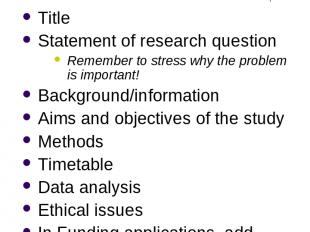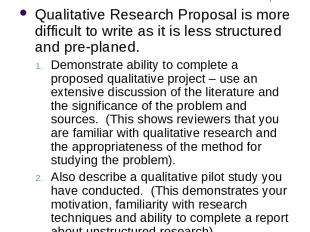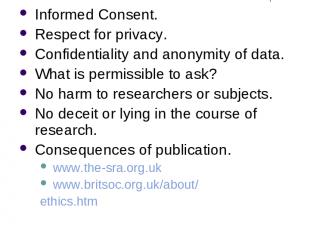Презентация на тему: research

What is Research? © www.drcath.net, 2008

What is Research? Research is the systematic process of collecting and analysing information (data) in order to increase our understanding of the phenomenon with which we are concerned or interested. Research involves three main stages: planning data collection analysis.

The Research Process Originates with a question or problem. Requires a clear articulation of a goal. Follows a specific plan of procedure. Usually divides the principal problems into more manageable sub-problems (hypotheses), which guide the research. Accepts certain critical assumptions. Requires collection and interpretation of data to answer original research question.

What is Social Research? It is research involving social scientific methods, theories and concepts, which can enhance our understanding of the social processes and problems encountered by individuals and groups in society. It is conducted by sociologists, psychologists, economists, political scientists and anthropologists. It is not just common sense, based on facts without theory, using personal life experience or perpetuating media myths.

Social research is a scientific process It involves the systematic collection of methods to produce knowledge. It is objective. It can tell you things you do not expect. It consists of theory and observation. Sometimes called ‘soft sciences’ because their subject matter (humans) are fluid and hard to measure precisely. It is an empirical research – i.e. facts are assumed to exist prior to the theories that explain them.

2 Forms of Social Research Basic or Pure Research: aim is to develop a body of general knowledge for the understanding of human social behaviour by means of a combination of empirical enquiry and application of theory. Applied or Policy Oriented Research: aim is to provide knowledge and information that can be used to influence social policy.

2 Forms of Social Research: Basic Research is done by academics. Applied Research is conducted by applied social researchers employed by sponsors. Success for basic social researchers is when results are published in a peer reviewed journal and have an impact on the scientific community. Success for applied social researchers is that their results are used by their sponsors in decision making.

Components of Research

Theory and Research Theories can be categorized by: Direction of reasoning (deductive/inductive) Level of social reality that it is explaining (macro/meso/micro) Whether it is formal (general) or substantive (specific).

Methodological Approaches: Epistemology There are three main epistemological perspectives: Positivism Interested in causes and predicting likelihood of incidences, seeks to explain, creates social ‘facts’. Phenomenology Interested in social meanings, seeks to interpret, uses direct involvement, creates data on social interactions. Critical Interested in understanding social phenomena in their social context, seeks out structural relationships, data is historical, structural and ideological.

Ontological Considerations Objectivism Phenomena independent of social actors. Organisations and culture are said to exist as a tangible object, external to the social actor. Constructionism Social phenomena and their meanings are continually being accomplished by social actors. Not only produced through social interaction but they are in a constant state of revision.

Research Design This involves: Defining the problem/research question Review of related literature Planning the research What methodology will you use? What data do you want to use/produce? How feasible is your research approach? Ethical considerations.

What is Research Design? A research design provides the framework for the collection and analysis of data. A choice of research design reflects decisions about the priority being given to a range of dimensions of the research process. Involves research method. Research method is simply a technique for collecting data. It can involve a specific instrument such as a self-completion questionnaire or a structured interview etc.

Tools of Research The library and its resources The computer and its software Techniques of measurement Statistics Facility with language Tools are not research methods – e.g. library research and statistical research are meaningless terms. Tools help your research methods. How familiar are you with these tools?

What do you need to think about when Designing Research? What is the purpose of the research? What are your units of analysis? What are your points of focus? What is the time dimension? Designing a research project: conceptualisation operationalisation. Reliability, replication and validity.

Different Purposes of Research (1) Exploratory Goal is to generate many ideas. Develop tentative theories and conjectures. Become familiar with the basic facts, people and concerns involved. Formulate questions and refine issues for future research. Used when little is written on an issue. It is the initial research. Usually qualitative research.

Different Purposes of Research (2) Descriptive research Presents a profile of a group or describes a process, mechanism or relationship or presents basic background information or a context. Used very often in applied research. E.g.: General Household survey – describes demographic characteristics, economic factors and social trends. Can be used to monitor changes in family structure and household composition. Can also be used to gain an insight into the changing social and economic circumstances of population groups. Often survey research.

Different Purposes of Research (3) Analytical (or explanatory) goes beyond simple description to model empirically the social phenomena under investigation. It involves theory testing or elaboration of a theory. Used mostly in basic research.

Different Purposes of Research (4) Evaluation characterised by the focus on collecting data to ascertain the effects of some form of planned change. Used in applied research to evaluate a policy initiative or social programme to determine if it is working. Can be small or large scale, e.g.: effectiveness of a crime prevention programme in a local housing estate.

Units of Analysis Can be individuals, groups, organizations, social artifacts (ie. products of social beings, for example, books, poems, paintings, automobiles, buildings, songs, pottery, jokes and scientific discoveries). behaviours (eg: social interactions, such as friendship choices, court cases, traffic accidents. Weddings (as a unit of analysis) – might be characterised as being religious or secular or ethnically or religiously mixed resulting in divorce or not or they could characterised by descriptions of one or both of the marriage partners.

Points of Focus Characteristics Orientations (attitudes, beliefs, prejudices, personality traits) Organizations (would be in terms of policy, procedures etc Social interactions, actions.

Other things to Note Time dimension – cross-sectional or longitudinal Conceptualisation – i.e. you must specify the meanings of the concepts and variables to be studied. Operationalisation – how will we actually measure the variables under study? Reliability – are the results repeatable? – relevant to quantitative social research. Replication - can others replicate the results? Validity – will examine later but are the results a true reflection of the world? Internal (are they measuring the underlying pheonomen)/external (generalise to the population)

Steps in Research Design Choose a Topic. Focus research question. Design the study. Collect the data. Analyse the data. Interpret the data. Present the results.

Defining the Research Problem State your research problem. Are there any sub-problems? What is the background (literature review) on this problem? What is good about tackling this problem? Why should we be interested in answering the research question? Discuss your problem with peers and experts. Have you looked at this problem from all sides to minimize unwanted surprises? Think through the process. Are you capable of addressing the issue? Can you foresee any pitfalls in data collection and analysis? What tools are available for you to use? What research procedure will you follow?

Research Design Where to start? Compile questions. Title. Background/information. Literature review. Aims and objectives. Methods. Timetable. Data analysis. Ethical issues. Resources. Dissemination?

Designing the Research After stating your research problem, you need to think about what approach you will use to the problem. Will it be quantitative or qualitative? Homework A PCT in inner-city London has realised that the uptake of flu vaccinations amongst the elderly is low. How would they discover the reasons for this?

Research Proposal (More formal than Research Design) Title Statement of research question Remember to stress why the problem is important! Background/information Aims and objectives of the study Methods Timetable Data analysis Ethical issues In Funding applications, add Resources/Budget Dissemination

Qualitative Research Proposal Qualitative Research Proposal is more difficult to write as it is less structured and pre-planed. Demonstrate ability to complete a proposed qualitative project – use an extensive discussion of the literature and the significance of the problem and sources. (This shows reviewers that you are familiar with qualitative research and the appropriateness of the method for studying the problem). Also describe a qualitative pilot study you have conducted. (This demonstrates your motivation, familiarity with research techniques and ability to complete a report about unstructured research).

Ethical Issues Informed Consent. Respect for privacy. Confidentiality and anonymity of data. What is permissible to ask? No harm to researchers or subjects. No deceit or lying in the course of research. Consequences of publication. www.the-sra.org.uk www.britsoc.org.uk/about/ ethics.htm

Research Design Exercise Draft an outline proposal on one of the following: Single motherhood Teenage sexuality Discuss the outline proposal with the following in mind: How would you clarify the reasons for planning the study? What does the study aim to achieve? How will it be done? Will the findings be useful?










































